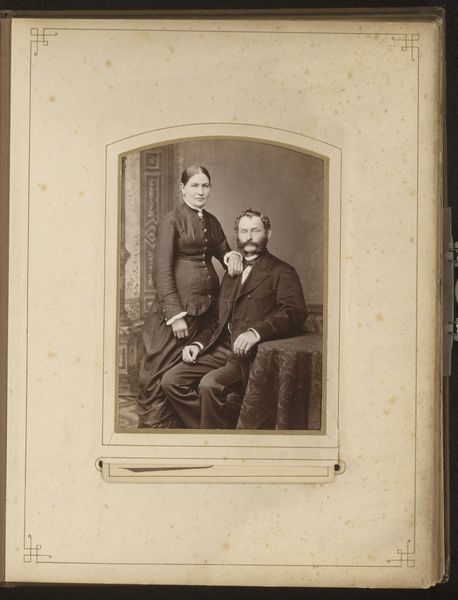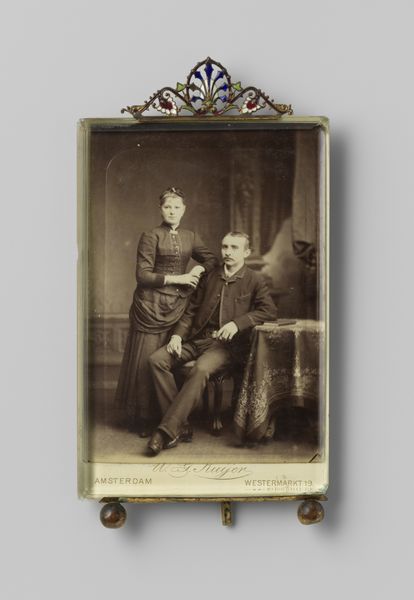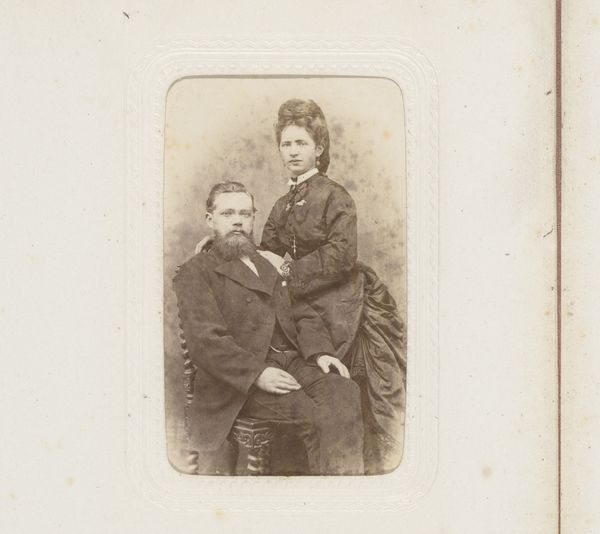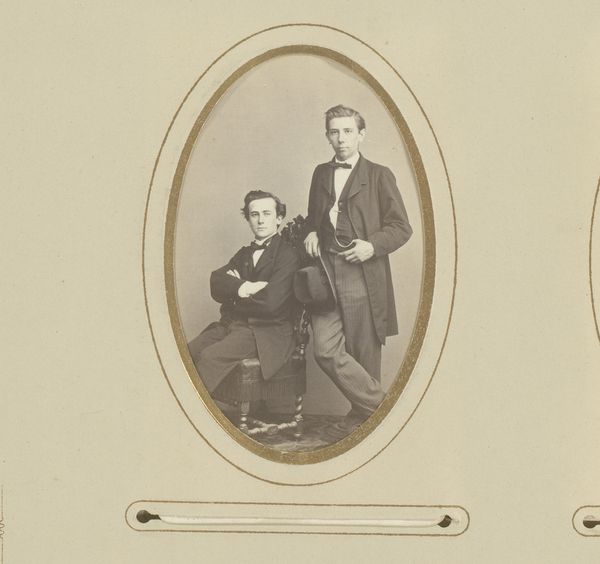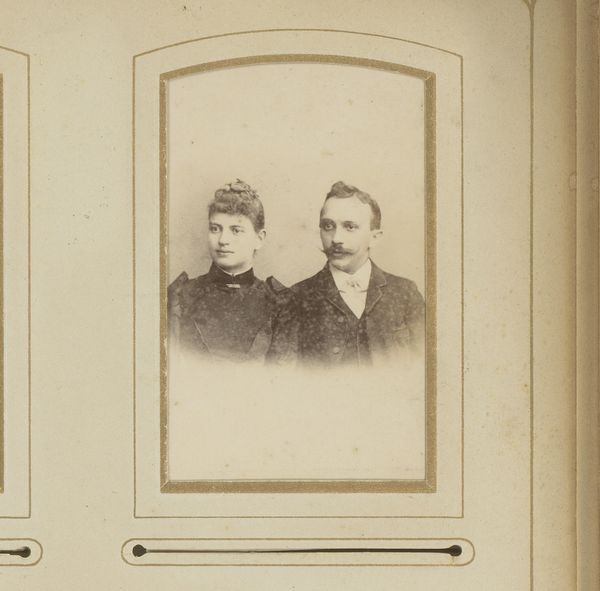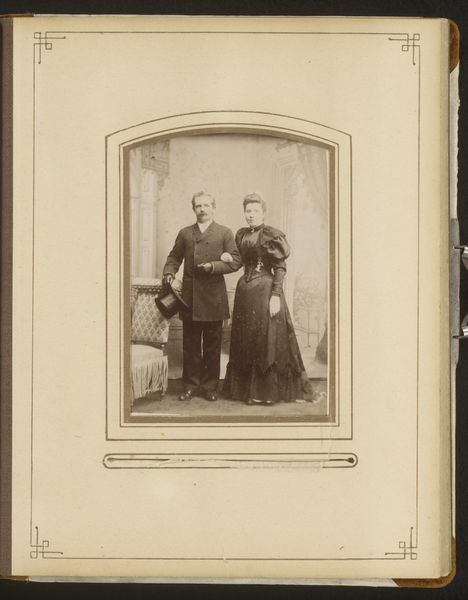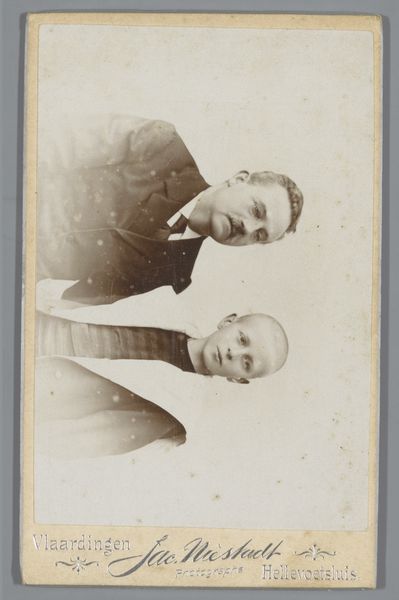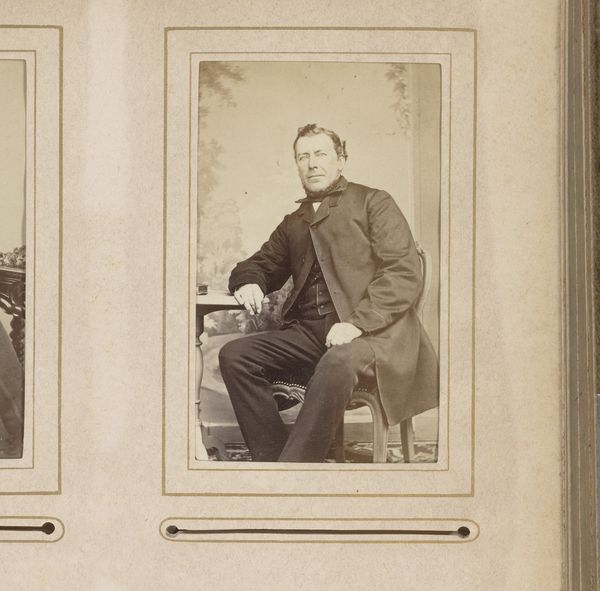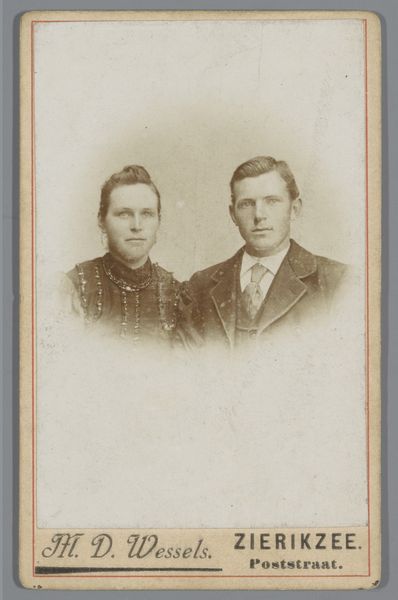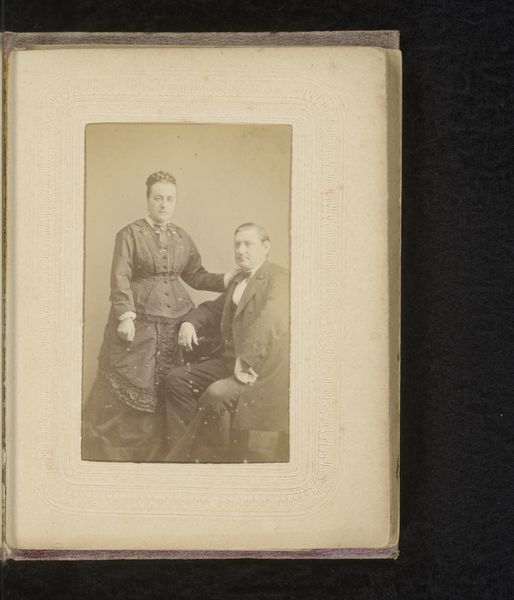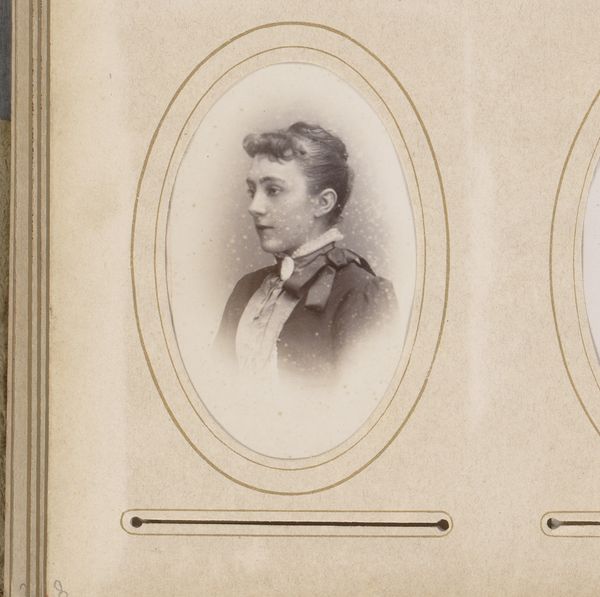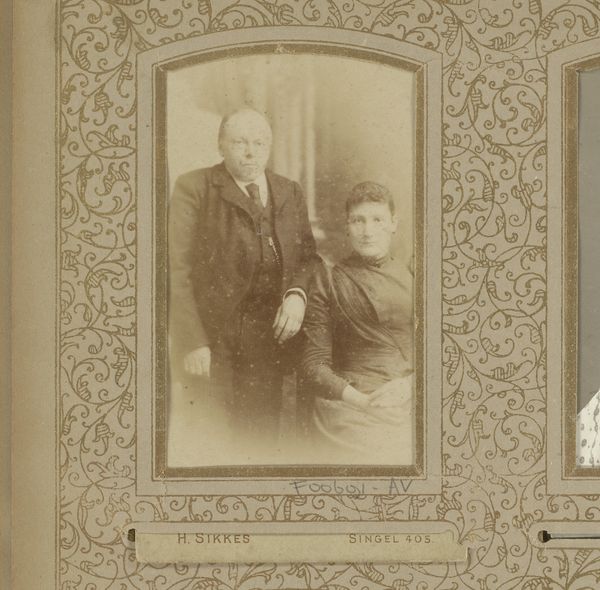
photography, albumen-print
#
portrait
#
studio photography
#
photography
#
group-portraits
#
genre-painting
#
albumen-print
Dimensions: height 128 mm, width 87 mm, depth 19 mm
Copyright: Rijks Museum: Open Domain
Curator: Here we have "Portret van een onbekende man en vrouw", or "Portrait of an Unknown Man and Woman," an albumen print photograph from somewhere between 1880 and 1900. It’s currently housed at the Rijksmuseum. Editor: My initial impression is one of formality. There’s such deliberate posing, the rigidness of their bodies suggesting an important occasion. Curator: Right, photography at this time was still a very involved and expensive process, demanding time and expertise. This photograph by the firm Van Bosch demonstrates the increasing accessibility of photography to the middle classes as a way of memorializing themselves, solidifying their status. Editor: Interesting to think of this as a crafted artifact of self-fashioning. The backdrop, the choice of clothing… every detail likely scrutinized to convey respectability. What about the material? I wonder about the material choices and studio processes that were involved in creating the image and the photographic paper it is printed on. Curator: The albumen print was indeed the dominant form of photographic printing during this period, known for its clarity and detail achieved through coating paper with egg white before exposure. The use of this technique suggests a desire for durability and precision in capturing their likeness. It's interesting to consider who "Van Bosch" was and how their studio may have democratized portraiture. Editor: I agree; photography, even in its early stages, presents an interesting dilemma. It offered wider access to image-making and therefore to power, yet it also demanded resources only some could acquire, thus reinforcing existing power structures. This portrait as a transaction, a staged event intended to be disseminated and interpreted. Curator: Yes, exactly. And beyond that, thinking about the circulation of this photograph… Was it displayed in their home? Given to relatives? Each destination inflecting its meaning and purpose. We'll never know exactly. Editor: Still, it prompts contemplation on identity, representation, and how people in that era chose to present themselves for posterity. This image serves as an intersection of personal narrative and social construction. Curator: Indeed. It's a fascinating testament to photography's power to capture not just appearances, but also the complex interplay between individual aspirations and societal expectations.
Comments
No comments
Be the first to comment and join the conversation on the ultimate creative platform.
